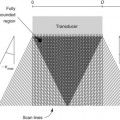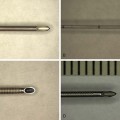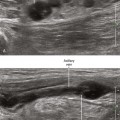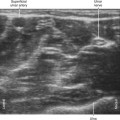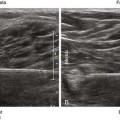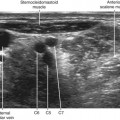15 Three-Dimensional Ultrasound
There are several reports of the use of three- or four-dimensional imaging to image nerves and guide regional blocks.1–3 The complexity of the surrounding echoes in musculoskeletal tissue can make rendering clear three-dimensional images challenging. Injected anechoic fluid can improve the interface for three-dimensional imaging of the nerve surface. Rendered volumes are often shown with sepia coloring to improve contrast resolution.
One potential advantage of three-dimensional imaging is to avoid partial line-ups of the block needle that can occur with two-dimensional in-plane technique. Because line-up is not necessary, performance time and accuracy of the procedure would benefit. One study found that the use of higher-dimensional imaging improved needle tip identification.4 However, another study found that multiplanar reformatted displays improved needle conspicuity compared with volume-rendered displays.5 Serious considerations for this developing technology balance obtaining more useful information with unnecessary distraction. Interventional procedure times tend to be longer with this technology.6
Stay updated, free articles. Join our Telegram channel

Full access? Get Clinical Tree


